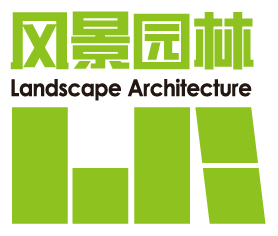Abstract:
Objective Urban lake wetlands possess significant regulatory functions and environmental benefits for regional environments. A synergistic layout of water and green spaces can enhance their temperature and humidity effects. In order to maximize the regional environmental effects of urban lake wetlands, it is of great practical significance for the planning and protection of the built environment of urban lake wetlands to strengthen and optimize the construction of green spaces in the surrounding built environment, and to explore the coupling relationship between the morphological composition and layout structure of green spaces in the built environment and the temperature and humidity effects of urban lake wetlands.
Methods This research takes Lingjiao Lake and its surrounding 300 m green spaces in the built environment within the main urban area of Wuhan as the research area, which is characterized by dense buildings and a complex composition of the built environment, including green spaces, plazas, commercial areas, and residential zones. In this research, the diurnal air temperature and relative humidity in July 2024 are measured as indicators. Using a combination of transect-based quantitative measurements and land use regression (LUR) models, a comprehensive assessment and data statistics and analysis are conducted to systematically investigate the spatio-temporal characteristics of air temperature and relative humidity effect field of urban lake wetlands.
Results This research comprehensively analyzes the factors influencing air temperature and relative humidity in the built environment surrounding urban lake wetlands, in combination with LUR model. The results indicate that: 1) The LUR model based on key influencing variables consists of water area, surrounding green space and built environment factors within a 300 m buffer zone, as well as relevant meteorological factors, and indicators of air temperature and relative humidity are successfully established, with the adjusted R 2 of 0.607 and 0.779 for air temperature and relative humidity, respectively, and the adjusted LOOCV R 2 of 0.763 and 0.957, respectively. Based on the correlation analysis of LUR model variables, the prediction variables for air temperature are ρT100, ρT25, DR, HB25, and ILA, while ρT50, ρB25, PW25, ILA, DB, and T for relative humidity. 2) The coupling of urban lakes and wetlands with surrounding green spaces has a significant effect on improving temperature and humidity. For air temperature, the combined blue-green effect of the 300 m buffer zone is 0.58 ℃, with a decrease of 0.19 ℃ every 100 m; for relative humidity, the combined blue-green effect of the 300 m buffer zone is 2.11%, with a 0.70% increase in humidity every 100 m. 3) The key influencing factors of air temperature and relative humidity in different buffer zones and surrounding green spaces vary significantly. Within a 50 m buffer zone, ρT is the only variable positively correlated with air temperature; regarding relative humidity, the influencing variables are ρT, PW, and PG. Within a 100 m buffer zone, ρB has a significant impact on air temperature, while ρT is the most significant variable affecting air temperature and relative humidity; regarding relative humidity, the significant influencing variables include PW, distance from traffic road (DR), and ρT. Within the buffer zones of 200 m and 300 m, ρB, ρT, and FSV (sky view factor) have significant effects on air temperature and relative humidity. In summary, the lower the traffic density, the higher the green space canopy density, and the larger the leaf area index, the more significant the synergistic cooling effect of blue-green space.
Conclusion This research, from the perspective of blue-green synergy, examines how urban built environment and land use factors affect temperature and humidity in terms of mechanism, intensity, and scope. Based on the LUR model consisting of blue-green factors, built environment factors, and meteorological factors, the research summarizes the spatio-temporal characteristics of the temperature and humidity effect field of urban lake wetlands, and reveals the associated effects of blue and green spaces and their physical-level spatial interactions, providing support for enhancing the environmental effects of urban lake wetlands. Based on the findings, the following strategies for improving the temperature and humidity regulation of urban blue-green space systems are proposed as follows. 1) Control the proportion of transportation infrastructure around urban water bodies; keep main roads at least 60 m away from water spaces to maximize the regulatory function of blue-green spaces. 2) Protect urban blue lines, green lines, and blue-green space effect lines; limit building density to approximately 0.35 within a 300 m buffer zone. 3) Select plant communities with high leaf area index (ILA > 2.0), canopy density (ρC > 0.77), and large crown width for green spaces around lakes, optimizing green space structures and increasing the proportion of multi-layered vegetation.

 下载:
下载:
